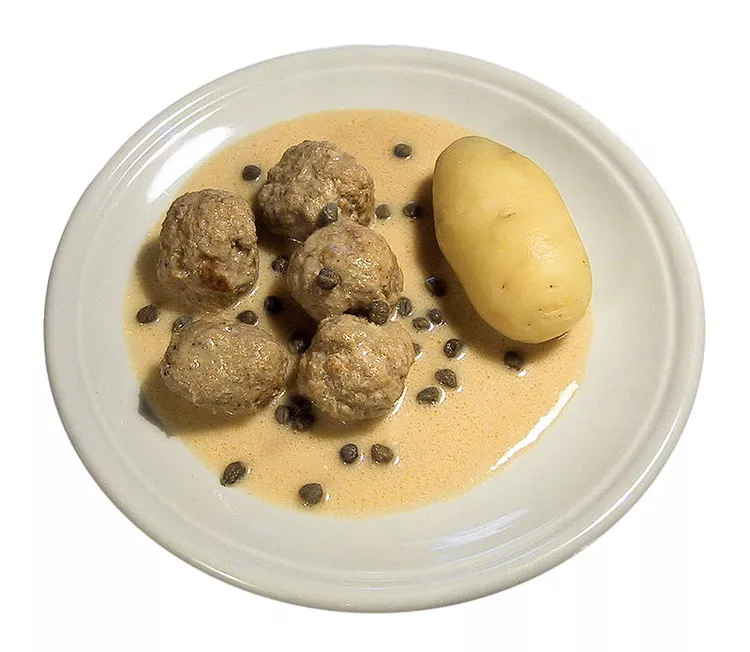Stronger than buildings, experiences, and products that evoke the unique sensation of Ostalgie (a combination of the German words for “east” and “nostalgia”), there is food. A “good German meal” usually brings to mind roasted pork and potatoes, but the food of East Germany can be the kind that only a Mutti could love. The product of DDR ingredient restrictions, East German meals were often born out of necessity.
That doesn’t mean they can’t be enjoyed. There has been a wave of nostalgic Ossi restaurants opening in places like Berlin, with the most persistent restaurants just waiting to come back into style. Whether you find them at a restaurant or try them yourself, you haven’t really sampled life behind the Wall until you’ve tried these East German meals.
Königsberger Klopse
An East German version of meatballs, Königsberger Klopse are named after the Prussian capital of Königsberg (now Kaliningrad). Covered in a creamy sauce with capers and lemon, they are served with boiled potatoes.
Though the dish outlived its namesake (the city was destroyed by Allied bombings and then taken by the Russians), it was tarnished by the city’s fate. Any reference to Königsberg was forbidden under DDR rule.
It was renamed Kochklopse by the party, though the German people reverted to calling it Revanchistenklopse (revisionist meatballs). Luckily, the delicious East German meal remained popular enough to survive the DDR and take back its original name.
Sülze

I’ve tried this East German staple several times and just can’t get into it—a common sentiment for people who have tried it with its English name, head cheese.
Known as Sülze, Schwartenmagen or Presskopf, this jellied meat is often flavored with pickles or vinegar in East Germany. It usually comes in loaf form and is sliced and served with raw onion.
Schnitzel

Though technically Austrian, Schnitzel can be found throughout Germany, and there are some unique adaptations from the former East. During the time of the Wall, meat was scarce, so Jagdwurst (spiced pork sausage similar to bologna) was sometimes used. Another unique Berliner adaptation was schnitzel made from cow’s udder. Understandably, very few places still serve either of these traditional dishes.
Eisbein

The robust roasted pork knuckle (Schweinshaxe) may seem to fall more under the Bavarian side of things, but when it is boiled or steamed, it is all East Germany. Although it’s missing the crunchy cracking of Bavaria’s Schweinshaxe, it is extremely juicy. One must simply peel back the layer of fat and dig into the moist meat below.
Like so many traditional meals in East Germany, it is most often paired with Sauerkraut and Erbspüree (pureed peas). If you have to throw some potatoes in there (it is Germany after all), try Knödel (dumplings).
Currywurst

Hamburg also claims ownership of this Berlin sausage, but Currywurst is unmissable in East Germany. The result of an inventive German housewife trying to add flavor to her family’s meager post-war diet, she traded alcohol for curry powder from English traders. Combining it with ketchup and Worcestershire and liberally applying it over a sliced Bratwurst, she made one of the most popular dishes in Germany today, with around 800 million sold each year.
Blutwurst

Continuing with the sausage theme, Blutwurst (blood sausage) also comes in regional varieties. A sausage made with congealed blood might not sound appetizing, but out of this list, it is one of my favorite foods.
The bizarrely named Tote Oma (Dead Grandma) is a beloved East German version. The Blutwurst is served loose and hot, usually alongside sauerkraut and potatoes. In the Spreewald outside of Berlin, the version is called Grützwurst and comes with Sorbian sauerkraut or smoked ham.





